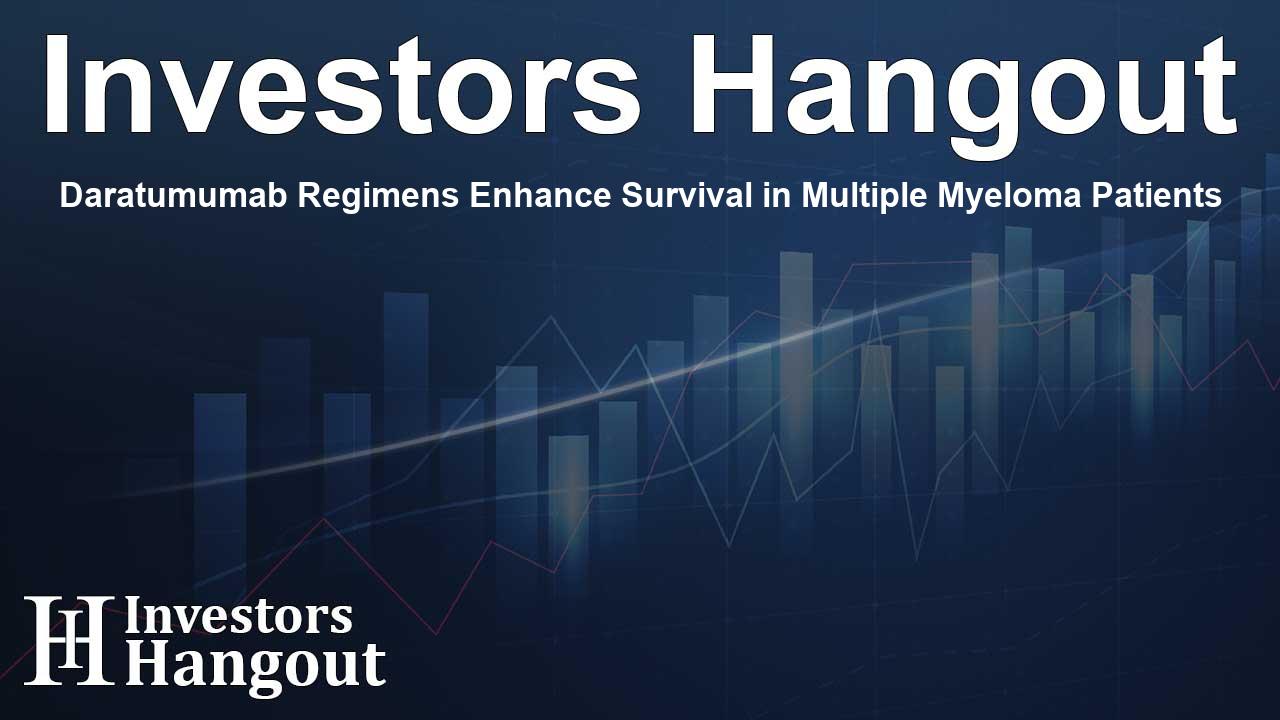Daratumumab Regimens Enhance Survival in Multiple Myeloma Patients

Transformative Impact of Daratumumab on Patient Outcomes
The evolving landscape of multiple myeloma treatment has gained remarkable insights from the latest analyses derived from key studies. A new evaluation from the Phase 3 CEPHEUS study revealed that an impressive 85% of patients achieved minimal residual disease (MRD) negativity at a sensitivity threshold of 10-6 when treated with daratumumab subcutaneously. This subgroup exhibited remarkable progression-free survival rates, marking a notable advancement in therapeutic strategies for newly diagnosed multiple myeloma (NDMM) patients.
Expanded Data from CEPHEUS and AURIGA Studies
Further findings from the ongoing AURIGA study indicate significantly higher rates of MRD negative conversion among patient populations severely impacted by multiple myeloma. The Phase 3 studies highlight the vital role of daratumumab in combination with existing therapies, setting a new benchmark for treating NDMM and AL amyloidosis.
Effectiveness in Achieving MRD Negativity
The expanded analysis from the CEPHEUS study underscores the positive effects of adding daratumumab to a regimen consisting of bortezomib, lenalidomide, and dexamethasone (D-VRd). This combination has led to not only improved rates of overall MRD negativity at both 10-5 and 10-6 sensitivity thresholds but has also shown marked improvement in progression-free survival when compared to standard treatment alone (VRd). The data highlights that, at a median follow-up of nearly 59 months, patients on the D-VRd regimen exhibited significantly higher MRD negativity rates, enhancing their long-term outcomes.
Long-term Benefits for Patients
Specific figures from the study illustrate the efficacy of the D-VRd regimen. The overall rates of MRD negativity at 10-5 were 60.9% as opposed to 39.4% with VRd alone, signaling the treatment's effectiveness. Moreover, the deep and sustained MRD negativity rates indicated a noteworthy enhancement in estimated progression-free survival rates, further solidifying the clinical benefits of the regimen.
Upcoming Trials and Their Importance
The study presented by leading hematology experts at recent conferences paves the way for more inclusive treatment strategies targeting populations typically underserved in clinical trials. Notable findings from the AURIGA study indicate that maintenance therapy with daratumumab shows consistently higher MRD negative conversion rates across various demographics, including older patients and racial minorities. This advancement supports the potential of daratumumab SC (subcutaneous) therapy in these groups, who previously faced limited treatment options.
Final Analysis of ANDROMEDA Study
The final analysis of the Phase 3 ANDROMEDA study has further reinforced daratumumab's pivotal role in the treatment of AL amyloidosis. The data substantiates the addition of daratumumab SC to the VCd regimen, demonstrating a significant overall survival improvement alongside reductions in major organ deterioration risks.
Statistical Insights from ANDROMEDA
Results showcased a 56% reduction in the risk of death or end-stage organ disease, reflecting the treatment's substantial impact on patient longevity and quality of life. By achieving deeper and quicker hematologic responses, daratumumab has solidified its status as a cornerstone therapy for patients diagnosed with this rare condition, emphasizing the need for ongoing research and development.
Why This Matters
The findings presented from CEPHEUS and AURIGA studies reveal much more than statistical analysis; they represent hope and improved outcomes for many patients facing dire diagnoses like multiple myeloma and AL amyloidosis. As Johnson & Johnson commits to this path of continuous innovation, daratumumab based therapies will likely remain at the forefront of treatment strategies for these blood cancers.
Frequently Asked Questions
What is daratumumab used for?
Daratumumab is primarily used to treat multiple myeloma and light chain (AL) amyloidosis, helping patients achieve deeper remissions.
How does daratumumab work?
Daratumumab binds to CD38 on myeloma cells, leading to their destruction and thereby inhibiting tumor cell growth.
What were the main findings of the CEPHEUS study?
The CEPHEUS study found that adding daratumumab to standard therapy significantly improved MRD negativity rates and progression-free survival in patients with newly diagnosed multiple myeloma.
Are there any side effects associated with daratumumab?
Yes, common side effects may include neutropenia, thrombocytopenia, and fatigue, similar to those seen with other myeloma treatments.
What future studies are being conducted on daratumumab?
Future studies will focus on expanding treatment options for diverse patient populations, particularly those with high-risk characteristics or those ineligible for transplant.
About The Author
Contact Owen Jenkins privately here. Or send an email with ATTN: Owen Jenkins as the subject to contact@investorshangout.com.
About Investors Hangout
Investors Hangout is a leading online stock forum for financial discussion and learning, offering a wide range of free tools and resources. It draws in traders of all levels, who exchange market knowledge, investigate trading tactics, and keep an eye on industry developments in real time. Featuring financial articles, stock message boards, quotes, charts, company profiles, and live news updates. Through cooperative learning and a wealth of informational resources, it helps users from novices creating their first portfolios to experts honing their techniques. Join Investors Hangout today: https://investorshangout.com/
The content of this article is based on factual, publicly available information and does not represent legal, financial, or investment advice. Investors Hangout does not offer financial advice, and the author is not a licensed financial advisor. Consult a qualified advisor before making any financial or investment decisions based on this article. This article should not be considered advice to purchase, sell, or hold any securities or other investments. If any of the material provided here is inaccurate, please contact us for corrections.
